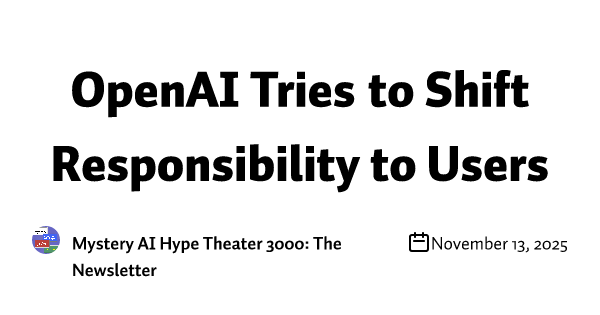Interview "I would say I'm cautiously optimistic, but that probably overstates how I'm feeling."
Dr John Grunsfeld, former astronaut, NASA chief scientist, and retired associate administrator of NASA's Science Mission Directorate, was talking to The Register in the wake of the proposed cuts to NASA's budget and, in particular, the proposal to reduce the agency's science budget by almost half.
At the time of writing, it appears that the US Congress has rejected the full extent of the cuts. After we spoke with Grunsfeld, the US Senate Appropriations Committee voted to approve its version of NASA's 2026 funding legislation, retaining 2025's $7.3 billion. The Planetary Society's Chief of Space Policy, Casey Dreier, said: "This is huge news for NASA science, and a complete rejection of the White House's draconian proposal."
However, plenty of wrangling remains before the budget is finalized and the House and Senate funding bills reconciled. "When that will happen is anyone's guess," said Dreier, "but likely not until the fall." The deliberations have the effect of creating short-term uncertainty in a community accustomed to working in the long term.
Grunsfeld's five Space Shuttle missions included three to service the Hubble Space Telescope. His last flight, STS-125 in 2009, was the final mission to the Hubble, and included the installation of the Wide Field Camera 3.
The observatory, which recently celebrated its 35th anniversary, is not slated for immediate termination, but, according to Grunsfeld, it is at risk of death by a hundred smaller cuts, many of which are already underway.
"If you look at the Hubble budget," he says, "it's currently $93.3 million. It's been that number – roughly – for the last 15 years.
"People love Hubble. The science community rallies behind it. The American public rallies behind it, and we've been able to convince the Senate and the House to keep the same number as last year."
That's great – until you factor in inflation. Taking that into account, according to Grunsfeld, means "we're already down about 30 percent in funding for Hubble."
While the proposed budget doesn't terminate Hubble, it does reduce funding for the mission. On the other hand, July 17's House Committee on Appropriations report [PDF] includes "not less than" $98.3 million for Hubble. The final figure has yet to be settled on.
Grunsfeld says: "What I've been told from people at the Hubble Space Telescope Science Institute and Goddard Space Flight Center is that they've been told to reduce the size of their workforce and to start turning off instrument modes to make operations less complex in anticipation of turning Hubble off."
The idea is that by deactivating a mode, the people responsible for maintaining the software and the scientists who use those modes won't be needed. If enough of those people aren't required, then the support staff behind them won't be needed. And so it goes on.
"They're just trying to whittle away at it," explains Grunsfeld.
The cuts, according to Grunsfeld, could extend to the team that works on upgrades to the telescope operating software itself. "Occasionally, onboard, we upload new software," he says. "So for instance, one of the big developments was, 'How can we operate on only one gyro?' Yeah, which is what we're operating on."
The Hubble Space Telescope officially transitioned to single-gyro mode in 2024, extending its operational life by a few more years. Gyros are used to point the telescope, and the observatory has six of these devices, which were replaced during the last servicing mission. However, three have since failed, and a fourth was showing signs of degradation. Switching to using just one gyro carries some limitations (the observatory needs more time to slew and lock onto a scientific target), but it will also extend Hubble's useful life.
- Thousands of NASA senior staffers expected to quit after budget slashed
- Former reality TV star appointed NASA interim administrator
- One Big Brutal Bill: Ex-NASA brass decry Trump's proposed budget cuts
- Trump's One Big Beautiful Bill bankrolls $85M Space Shuttle shuffle
"Now, that took a big software effort, lots of testing on the ground. You don't want to send that software up, and then Hubble looks through into the Sun, you know? And that's the end of Hubble, because somebody made a sign error.
"So it's a delicate business, and my understanding is that, because of the budget cuts, they said, 'Get rid of the Software Group. We'll just live for the rest of public life with the current software.'"
Which means that the next time something needs to be fixed, there might not be anybody around to deal with it.
Grunsfeld started out by building a detector for X-ray astronomy and flying it on a balloon flight as an undergraduate. "Today," he says, "the balloon program is incredibly more capable ... it's an incredibly cost-effective way of doing cutting-edge science in advance of the hundreds of millions of dollars it takes to put up a small astrophysics spacecraft."
And yet, the proposal would eliminate the program's $49 million annual budget. Why? "I have no idea," says Grunsfeld. "Because somebody probably saw a balloon project and thought, 'NASA shouldn't be doing balloons.' They're a space agency? Somebody probably just said 'We're going to kill it because we think it's stupid' without actually knowing what it is."
Some of those cuts seem to be already underway in one form or another. "We still don't know what will happen," says Grunsfeld. "What's unfortunate is, in the meantime, the administration is moving ahead with layoffs and pushing out NASA employees.
"They're using a reduction in force method where they say, 'Hey, if you retire now, you know, you get your benefits right away,' or whatever it happens to be. And so I think some relatively large numbers, like 9 percent of the workforce, have already left or indicated that they'll leave, and this tends to be the most senior people with the most knowledge.
"And so it's a real brain drain." ®
.png)



